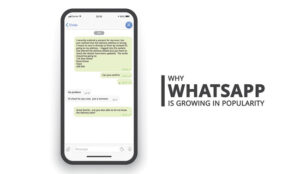Tom Tseki identifies the five trends responsible for the rise in the number of contact centres that are employing omni-lingual support.
For decades, voice communication has ruled the roost in the call centre industry, with over-the-phone interpretation working as a primary multilingual strategy for a number of companies.
However, consumer preferences for digital and self-service communications have caused the industry to develop at a rapid pace, generating new, innovative ways of connecting with customers via language strategies.
The expectation for multilingual support has never been higher, driven in large part by the following five trends.
1. Voice Has Stepped Aside for Multi/Omni-Channel Communication
Forrester has revealed that, for the very first time, voice is no longer the consumer’s preferred communication channel.
76 percent prefer to use a company’s FAQ website and 58 percent prefer online chat mechanisms. This data proves that self-service is expected as standard by consumers, and providing over-the-phone interpretation (OPI) as the primary multilingual support option is no longer an effective standalone option.
Today’s consumers increasingly demand a seamless experience across channels, from voice and chat to email and social media.
A recent study by Yankee Group estimates that 60 percent of interactions across the customer journey are interrelated. Furthermore, 57 percent of calls made to a contact centre originate from a website visit and 30 percent of callers are still on the company’s website when they call the contact centre.
So, it’s important to think about whether Marketing has made the website compatible to support other languages and whether this contradicts the contact centre, which may only be able support English-speaking contacts? This happens far too often and reinforces the need for multilingual support across channels so the customer is provided with a unified journey.
2. There Is a Direct Relationship Between Value and CX
If an audience doesn’t understand the content they are being presented with or can see it is not fit for purpose, they will be disconnected from it and the brand presenting it. Consumers increasingly prefer to learn, shop and transact in their native language, and expect brands to communicate with them accordingly.
A recent study from Common Sense Advisory showed that 84 percent of consumers are more inclined to purchase products online when related information was presented in their own language. Yet cut-and-paste tactics and quick-fix formulas continue to rear their ugly head.
It is imperative for contact centres to localise their websites with proactive chat options in order to provide quality customer experiences and keep their audience engaged.
3. Contact Centres Struggle with Multilingual Support
The Common Sense Advisory research underscores the importance of language to customer value.
Therefore, findings from the International Customer Management Institute (ICMI), showing that only 19 percent of contact centres provide multilingual voice support may come as a surprise (and the percentages drop significantly for other channels). It’s vital contact centres can provide this.
4. Self-Service Is a Must to Ensure the Purchase
Indicative of today’s culture, recent Forrester research found that consumers are more likely to go online before they pick up the phone. Millennials lead the pack on this practice with their expectation that all brands should provide a self-service option, so questions can be answered and issues rectified quickly and effectively without the need for a phone call that they do not value and that costs you more.
With this in mind, brands need to provide response options including chat, website, forum/community and mobile support. Online chat is a critical component of effective online customer engagement, with Forrester reporting that 55 percent of consumers are inclined to abandon their online purchase if they cannot find a quick answer to their question or pursue a live chat option.
These self-service channels need to be enabled with omni-lingual capabilities to benefit the largest pool of customers and be a truly global approach. If the majority of content is presented in only a single or select group of languages, the channel isn’t helping non-primary speakers.
5. It’s All or Nothing – Today’s Consumer Expects 24/7 Support
All day and all night support has become an assumed and valued expectation for consumers, including the ability to connect through channels such as mobile and social media in real time, regardless of the time or day of the week.
Forrester reports that 77 percent of respondents say valuing their time is the most important thing a brand or company can do to provide superior online customer service. By providing a toolbox of multilingual channel options, brands are in a much better position to provide that 24/7 support, with real-time online chat ticking boxes for consumers who require prompt responses.
Additionally, providing language support through self-service and digital channels reduces the number of inbound calls, which in turn drives down OPI costs. This is a win–win situation for both consumers and brands who have a shared objective of customer satisfaction and the end result – a purchase.
Language is key to providing more personalised and relevant interactions with customers – two musts for twenty-first-century contact centres.

Tom Tseki
To ensure this is delivered, today’s savvy contact centre leaders are moving beyond OPI to broader multilingual support across the omnichannel.
This ensures a positive consumer experience that satisfies all the customer’s needs, in a fast-paced world where the answer should only be a click away, irrespective of language.
For more information, visit www.lionbridge.com
Author: Robyn Coppell
Published On: 13th Apr 2017 - Last modified: 5th Mar 2019
Read more about - Customer Service Strategy, Multilingual, Trends




































